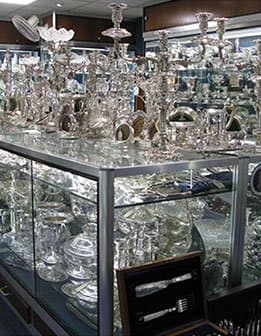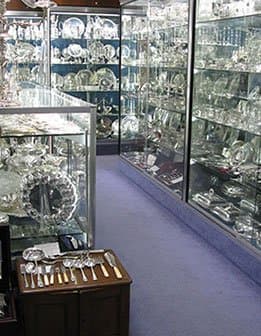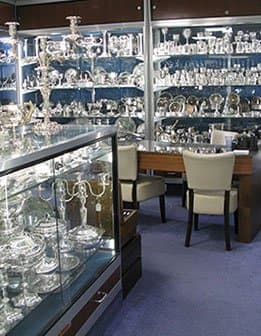Gifts from The Georgian Era: Silver from 1714 – 1830
Spanning more than a century, the Georgian era (1714 – 1830) was a time of remarkable development and stylistic change in British silver. Named after the reigns of Kings George I through IV, this period saw silverwork move from richly decorated early designs to the refined, symmetrical styles influenced by ancient Greece and Rome.
Shifting Tastes and Influences
Early in the Georgian period, silver was characterised by weighty and elaborate forms. As the decades progressed, changing fashions gave rise to the lighter and more fluid Rococo style, followed by the structured forms of Neoclassicism. These shifts were influenced by broader European trends, including Enlightenment ideals and archaeological discoveries that reignited interest in classical art and architecture.
Notable Makers and Advancements
This period gave rise to some of the most respected British silversmiths. Among the standout figures of this era is Hester Bateman (1708–1794), widely recognised as “the Queen of British Silversmiths.” After the death of her husband John Bateman in 1760, Hester took over his tools and his business, registering her first maker’s mark, the elegant “HB” in script, in 1761. Initially, few items appeared with her mark, likely due to her role as a supplier to other workshops. However, by the early 1770s, she had begun to establish a more prominent presence in the trade.
Working alongside her sons John and Peter from around 1774, Hester built a thriving silversmithing business in Bunhill Row, London. Together, they produced refined household items including teaware, salvers, jugs, inkwells, wine labels and salt cellars, all marked by the family’s signature bright-cut engraving, pierced detailing, and finely beaded edges. Their work exemplifies the neoclassical style that came to define the late Georgian period.
Hester retired in 1790, but the Bateman family carried on the business well into the 19th century, with successive generations maintaining the family’s reputation for quality and innovation. Today, pieces bearing Hester Bateman’s mark are highly sought after for their design and historical significance. At William Walter Antiques, we’re pleased to offer a selection of exceptional Bateman silver, each piece a window into one of the most influential silversmithing dynasties in British history.
Paul Storr also produced some of the most sought-after silver of the early 18th century. He was an English goldsmith and silversmith working in the Neoclassical and other styles. His works range from simple tableware to magnificent sculptural pieces made for royalty. The latter part of the Georgian period also saw regional assay offices like Birmingham and Sheffield join London in hallmarking silver, making it easier to trace origin and authenticity.
Silver at the Table and Beyond
Georgian silver was a central part of domestic and social life. Salvers, tea services, candlesticks, and sauce boats were commonly found in homes and used regularly. These objects were designed not only to serve a purpose but to reflect status, wealth, and personal taste.
At William Walter Antiques, we regularly offer pieces from this era, each selected for its historical interest, condition, and distinctive design. Georgian silver continues to attract collectors and buyers seeking meaningful connections to the past.
Examples of our current Georgian pieces are below:







Our Makers
An A to Z list of silversmiths featured on our website
About Us
If you see something in Archive that you would have liked please contact us as we might be able to source
Our Store
Our store is situated in vaults 3 and 5 on the right-hand side of the main corridor at The London Silver Vaults



